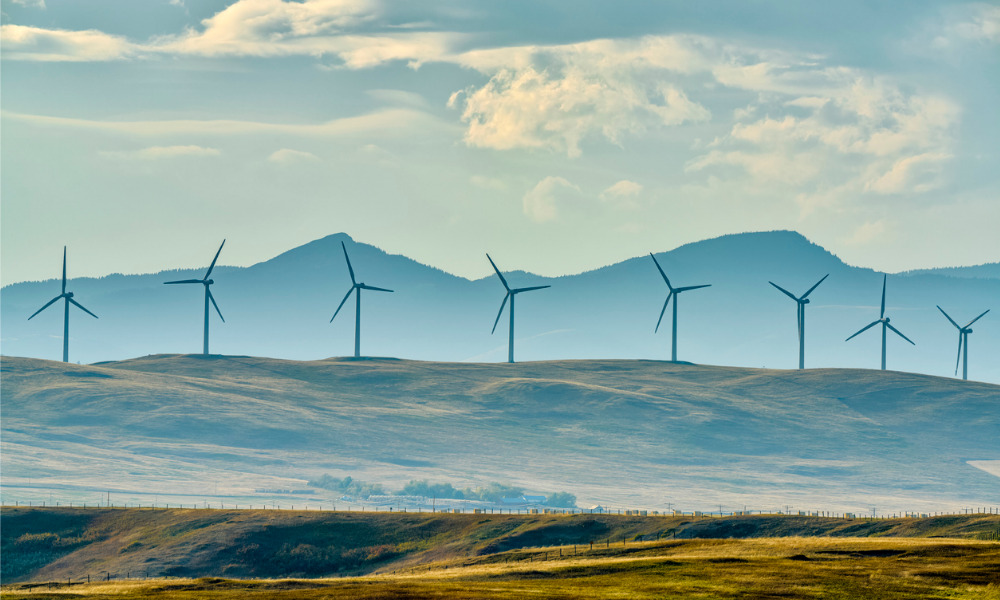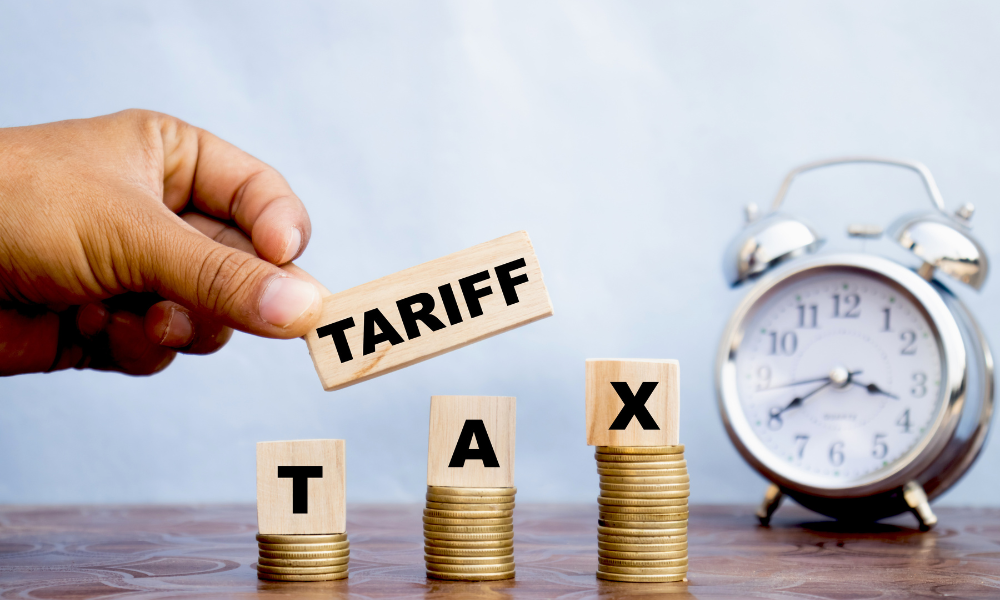Canada must diversify its energy mix and lower the carbon output in its oil and gas industries to compete in a future of declining oil and gas demand, according to Environment and Climate Change Canada’s 2030 Emissions Reduction Plan. On the emissions reduction front, Ottawa’s goal for the oil and gas industry is 42 percent below 2019 emissions levels.
The energy sector is pursuing various types of renewable energy and looking to innovate and expand methods of decarbonizing its processes, with help from the government.
“That’s a very aggressive target,” says Sander Duncanson, a partner at Osler Hoskin & Harcourt LLP in Calgary, who advises natural resource developers on environmental, regulatory, and Indigenous law issues.
Duncanson acknowledges that Russia’s invasion of Ukraine and the resulting sanctions have left a gap in the world market that Canada may want to fill with its energy resources. He says the only feasible way to reduce emissions while maintaining that production growth is through carbon capture, utilization, and storage (CCUS).
“There’s not really any other large-scale technology that oil and gas operators could use to materially reduce their own emissions.”
CCUS involves capturing carbon from industrial processes, compressing it, storing it underground, or using it in another way. In 2021, the federal government announced it would spend $319 million over seven years for the research, development, and advancement of the commercial viability of CCUS technologies. The 2022 federal budget also proposed a tax credit for businesses investing in CCUS. The credit would cover 60 percent of the cost of eligible equipment used in direct air capture, 50 percent of the cost of all other eligible capture equipment, and 37.5 percent of the cost of eligible equipment for transportation, storage, and use. Ottawa expects the credit will cost $2.6 billion for the next five years and then $1.5 billion annually until 2030.
The tax credit does not apply to all CCUS projects, says Duncanson. One challenge for these measures, he says, is where the incentives are directed.
It is not typically the emitter that captures, transports, and sequesters the carbon dioxide. Duncanson sees “more of a hub model” currently in operation, where a third party provides that service. These third parties need customers to sign long-term agreements to build these projects. But for the customers – the emitters – there is not currently a sufficient economic rationale to enter into that type of commitment, says Duncanson.
“Right now, there’s so much uncertainty in the market. That is – in most cases – meaning that the emitters or potential customers are not coming forward to underpin those projects. And without those underpinnings, those projects will not proceed much farther in their development than they are right now.”
“It’s kind of this catch-22,” he says. “We have to move extremely quickly if we want to hit those 2030 targets. But without more short-term incentive for the emitters to get behind these projects, that’s likely not going to happen.”
It is not only governments who have emissions reduction targets. Multinational corporations, including in the oil and gas sector, also aim for net zero. Power purchase agreements (PPAs) are one method companies use to lower their emissions profile. They continue to be a significant driver of renewable electricity generation, says Vivek Bakshi, global energy sector leader at Dentons Canada LLP. The market for PPAs in Canada – and Alberta, in particular – is “really buoyant,” he says.
For most of his 15 years practising, John Vellone, a partner at Borden Ladner Gervais LLP in Toronto, has been advising governments, utilities, and system operators on various physical and financial PPAs. He says that interest has recently accelerated, driven partly by investors and other stakeholders pursuing net-zero emissions and building ESG offerings.
A power purchase agreement (PPA) is a contract between an energy developer and a buyer – typically a utility – to receive power generated from energy assets. VPPAs (virtual power purchase agreements) differ in that they are “fundamentally financial agreements” and “do not require a direct physical electrical interconnection,” according to “Renewable VPPAs and ESG: What you need to know before you buy,” an article written by Vellone and Shane Freitag. Electricity consumers can use VPPAs as a commodity hedge to fix energy prices and avoid sudden price increases, while electricity generators can use them to avoid sudden price drops.
Learn more about electricity regulations in Canada and who implements these regulations.
Renewable VPPAs, which are tied to the electric output of one or more renewable electricity–generating facilities, can also include environmental attributes, most commonly renewable energy certificates. With these certificates, companies can reduce their greenhouse gas emissions profile and further their net-zero goals, write Vellone and Freitag.
“Initially, the first movers were corporations like Amazon, Microsoft, and Google as their server and data warehouses require a significant amount of power,” says Vellone. “Other large, publicly listed companies are now following suit. These organizations tend to be brand-conscious, and their interest in VPPAs is driven by shareholder pressure and activism to some extent. And this trend is rippling down even to small and mid-sized companies.”
In recent years, all the action on renewable PPAs has occurred in Alberta, says Kimberly Howard, a partner in McCarthy Tétrault’s energy and infrastructure group in Calgary. Alberta does not have a central public utility like Hydro Quebec or Saskatchewan’s SaskPower. Anyone can build generation, and they do not need to rely on a central utility to sell power into the grid.
But there has been a resurgence in other provinces, with Nova Scotia, Ontario, and Quebec currently going through public procurements of PPAs, she says.
The federal government is also working on a plan to bring emissions from Canada’s energy grid to net zero by 2035.
With significant “renewable penetration” and the broad use of hydroelectricity, Canada is well positioned in this mission, says Bakshi.
Canada has one of the world’s cleanest electricity grids, with 82 percent of its electricity coming from “non-emitting sources,” according to Environment and Climate Change Canada.
Pairing renewable resources with hydrogen projects is a growing trend in the renewables space, says Jonathan Cocker, a partner at BLG in Toronto and a member of the firm’s ESG leadership team. “That’s where a lot of new value [and] new opportunities exist.”
On August 23, 2022, Canada and Germany signed a pact to establish a transatlantic hydrogen supply network. Under the agreement, Canada will produce hydrogen and ship it to Europe to help fill the energy gap left by Russia’s invasion of Ukraine and the resulting sanctions against Russia, a significant energy producer.
Hydrogen is viewed as “one of the big clean energy tools” that will propel Canada through the energy transition, says Kerri Howard, co-head of McCarthy Tétrault’s national oil and gas group.
Natural Resources Canada’s Hydrogen Strategy for Canada, released in 2020, lists the four common hydrogen feedstock and production pathways being researched and deployed in Canada. Grey hydrogen is sourced from natural gas or gasified coal and produced without carbon capture and sequestration. Though it is abundant and has the lowest cost, this form of hydrogen has the highest carbon intensity. Blue hydrogen comes from fossil-fuel-based energy but is produced with carbon capture and sequestration to lower carbon content. Nuclear hydrogen, which uses nuclear energy, has low carbon intensity but limited availability. Green hydrogen is derived from renewable electricity, such as wind, solar, or hydroelectricity, and has the lowest carbon intensity.
One of the problems with renewable energy is its variability, says Vellone. The wind is not constantly blowing, and the sun is not always shining.
Battery storage is currently handicapped by the expansion of electric vehicles, which is leading to shortages of the rare-earth minerals required to manufacture them, he says. But several innovative storage technologies are emerging in Canada.
For one, green energy supplier Hydrostor is piloting a project in Lake Ontario, using bags of compressed air held underwater until energy is required. The weight of the lake water pushes the air into a turbine. Another example is a flywheel. An electric motor charges this mechanical battery, which speeds up a heavy rotating disc enclosed in a vacuum-sealed cylinder. The energy is stored in the momentum of the rotation.
“Energy storage has picked up an incredible amount of momentum in 2022,” says Vellone. “I haven’t had a single project cross my desk that doesn’t have an energy storage component. Any conversation, pitch, or file relating to renewable energy now involves energy storage.”





